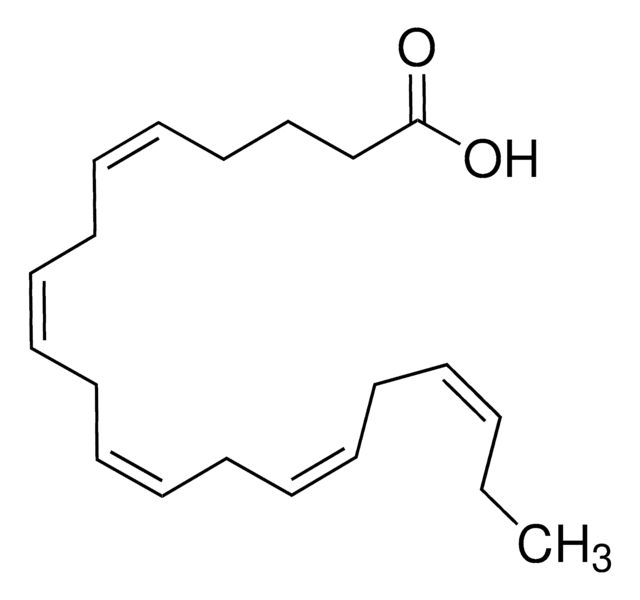62160
Linolenic acid
analytical standard
Synonym(s):
α-Lnn, cis,cis,cis-9,12,15-Octadecatrienoic acid
About This Item
Recommended Products
grade
analytical standard
Quality Level
assay
≥98.5% (GC)
shelf life
limited shelf life, expiry date on the label
technique(s)
HPLC: suitable
gas chromatography (GC): suitable
refractive index
n20/D 1.480 (lit.)
n20/D 1.480
bp
230-232 °C/1 mmHg (lit.)
mp
-11 °C (lit.)
density
0.914 g/mL at 25 °C (lit.)
application(s)
food and beverages
format
neat
functional group
carboxylic acid
oleic acid
storage temp.
−20°C
SMILES string
CC/C=C\C/C=C\C/C=C\CCCCCCCC(O)=O
InChI
1S/C18H30O2/c1-2-3-4-5-6-7-8-9-10-11-12-13-14-15-16-17-18(19)20/h3-4,6-7,9-10H,2,5,8,11-17H2,1H3,(H,19,20)/b4-3-,7-6-,10-9-
InChI key
DTOSIQBPPRVQHS-PDBXOOCHSA-N
Looking for similar products? Visit Product Comparison Guide
Application
Biochem/physiol Actions
Storage Class
10 - Combustible liquids
wgk_germany
WGK 1
flash_point_f
235.4 °F - closed cup
flash_point_c
113 °C - closed cup
ppe
Eyeshields, Gloves
Choose from one of the most recent versions:
Already Own This Product?
Find documentation for the products that you have recently purchased in the Document Library.
Customers Also Viewed
Articles
The potential for the prevention and treatment of cardiovascular disease through increased dietary intake of omega-3 (w-3) fish oils is not a recent scientific discovery.
Our team of scientists has experience in all areas of research including Life Science, Material Science, Chemical Synthesis, Chromatography, Analytical and many others.
Contact Technical Service









